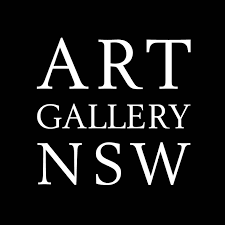Gandel Foundation is proud to be directly involved in the Japan supernatural exhibition at the Art Gallery of NSW as the principal patron.
Gandel Foundation is also the public programming patron, enabling the production of a range of public events associated with the exhibition.
Featuring over 180 wildly imaginative works by some of the greatest Japanese artists of the past and present, from historical master Katsushika Hokusai to contemporary superstar Takashi Murakami, the exhibition is part of the 2019–20 Sydney International Art Series.
Japanese artists across the centuries have created a lively parade of magical
animals, fiendish imps, legendary monsters and ethereal spirits. Known in Japan
by many names including yōkai, yūrei, bakemono and mononoke, manifestations of the paranormal are prevalent in folklore,
literature, theatre and art.
As audiences step into the realm of the supernatural across almost 300 years of
Japanese art they’ll view magnificent paintings, large-scale installations,
miniature carvings, humorous illustrations and the vibrant ukiyo-e woodblock prints that define the tradition
of the supernatural in Japanese art.
Centred on a monumental installation of painting and sculpture by Takashi
Murakami, Japan supernatural features works by the late manga
artist Mizuki Shigeru and contemporary artist Tarō Yamamoto as well as masks by
Hideta Kitazawa.
Also in the exhibition are rich and nuanced works by leading female Japanese
contemporary artists Fuyuko Matsui, Miwa Yanagi, Tabaimo and Chiho Aoshima.
|
These artists
continue the creative lineage of visualising the unseen, their works
presented together with some of the greatest Japanese artists of the past
including Katsushika Hokusai, Utagawa Kuniyoshi, Tsukioka Yoshitoshi and
Kawanabe Kyōsai.
The paintings, woodblock prints, illustrated books and objects come from museum collections around the world and from the Gallery’s significant collection of Japanese art, which began in the late 1800s with the gift from Japan of a group of ceramics and bronzes to the then new Gallery, following the Sydney International Exposition in 1879. Art Gallery of NSW director Dr Michael Brand said the exhibition is the largest and most complex exhibition of Japanese art in the Gallery’s history. “This project is the outcome of extensive discussions between a broad Gallery team and our international museum colleagues, as well as private collectors around the world. It has resulted in some of the finest works of Japanese art ever created on display exclusively in Sydney,” Brand said. “In particular, works are coming to us from the British Museum, the Museum of Fine Arts, Boston and the Minneapolis Institute of Art whose collections of Japanese art are outstanding.” “A key work from the Museum of Fine Arts, Boston is Toriyama Sekien’s five-metre-long, exquisitely rendered scroll, Night procession of the hundred demons (Hyakki yakō zu) c1772–81. This extraordinary painted handscroll depicts a large cast of otherworldly characters – a perfect welcome to the exhibition for our visitors,” Dr Brand said. |
Additional works for Japan supernatural from the MFA, Boston include prints by renowned artists Tsukioka Yoshitoshi and Kawanabe Kyōsai, with a selection of works from Yoshitoshi’s series One hundred ghost stories from Japan and China (Wakan hyaku monogatari) 1865 as well as Momotarō scattering beans for setsubun (Momotarō mamemaki no zu) 1859. Prints designed by Kyōsai include A nose-pulling contest with an elephant (Zō no hanabiki) and The great tengu does calligraphy (Sho no dai tengu) from the series One hundred pictures by Kyōsai (Kyōsai hyakuzu) 1863.
Among the many striking works from the Minneapolis Institute of Art are all
images from the series One
hundred ghost stories (Hyaku monogatari) c1831–32 by Japan’s internationally beloved artist
Katsushika Hokusai, including the chilling portraits The ghost of Oiwa (Oiwa-san), The mansion of plates (Sarayashiki) and Laughing demoness (Warai hannya),* as well as exceptional paintings by
Shibata Zeshin, Kyōsai and Yoshitoshi.
From the British Museum comes the work of celebrated artist Utagawa Kuniyoshi, Mitsukuni defies the skeleton spectre conjured up by Princess Takiyasha 1845–46. This woodblock print triptych depicts a notorious scene from legend, a terrifying giant skeleton or ōdokuro summoned by a princess in revenge for the murder of her father.
Works in the exhibition are also drawn from the collections of The Broad in Los Angeles, the National Gallery of Australia, the National Gallery of Victoria, the National Library of Australia, the Museum of Applied Arts and Sciences, and from private collections in Japan, Germany and Australia.
Exhibition curator and Art Gallery of NSW senior curator of Asian art Melanie
Eastburn said the exhibition celebrates representations of the tales, events
and beings of the mysterious unseen worlds in Japanese art from the Edo period
(1603–1868) to the present day.
“Japanese artists have used intricate narratives and powerful imagery to make
the invisible world of the supernatural tangible,” Eastburn said.
“The imagination and skill of artists such as Sekien, Kuniyoshi and Yoshitoshi
continue to resonate just as contemporary expressions of legend, fairy tales
and spirits in the work of Murakami, Aoshima, Yanagi, Kitazawa and Matsui
captivate viewers, luring us into the beguiling, tangled realm of demons and
spirits,” Eastburn added.
A beautifully designed, richly illustrated book has been published by the Art Gallery of NSW in conjunction with the exhibition with contributions from specialist writers from Australia, Japan and the USA.
The public events, supported by Gandel Foundation, that will run alongside the Japan supernatural exhibition have something for everyone. They include a rare talk by Takashi Murakami; a lecture series, Phenomenal beings: spirits in Japanese art and culture; a spooky retrospective of global horror cinema; a Japanese art summer school and for families and children, January school holiday workshops.
A Studio Ghibli festival, perfect for art lovers of all ages and an exclusive after-hours event hosted by the Gallery’s Youth Collective will also spirit guests away to the realm of the supernatural in Japanese art.
END

